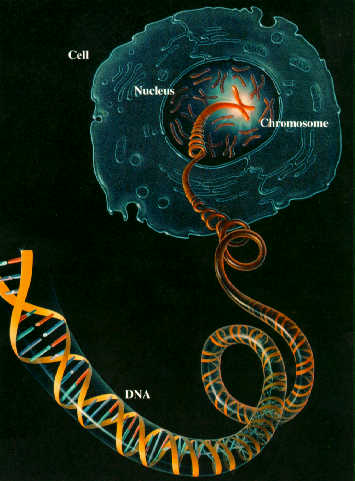Op – Ed:Human Genome Project misunderstood
by Aslam Khan Ghalib
The world of science demands the upcoming generation to be part of the team of inventers. The recent changes brought about by the scientists of the globe have kept many in anonymity and revolutionized the world with many incredible discoveries and inventions.
The human genome project which started in the early 90s and ended up in 2003 has greatly influenced the field of life sciences and especially the field of medicine and surgery. In today’s world the diagnosis of complicated and mystifying diseases have become much easier with the help of automated and digital supported technology. This technology is based upon the basic principles of biotechnology and genetic engineering. Today the molecular diagnosis has overcome the chemical and physical diagnosis and is more reliable and worthy explanatory.
 The future prospects of gene therapy are very dazzling and would cure many hopeless and convoluted minds who have not been able to get rid of some serious genetic abnormalities which have passed on from generation to generation with more augmented and lucid effects.
The future prospects of gene therapy are very dazzling and would cure many hopeless and convoluted minds who have not been able to get rid of some serious genetic abnormalities which have passed on from generation to generation with more augmented and lucid effects.
The medicines based on genetic engineering would show their effects more clearly then the radio or chemotherapeutic medicines. The delicacy of this kind of treatment has made it little difficult to proceed with but it is expected that some better layout will be developed to over come this core aspect of the treatment.
Many people discussing bioethics are of the view that using the genetic tools for therapeutic purposes must be discouraged keeping the concept of cloning in mind. This is some how not a true and prospective notion. We relate the term cloning with the identical copies of an individual only and do not bother about the kinds of cloning. Cloning is made at different levels. Cloning of a specific gene can be beneficial in amplification and manipulation of a specific trait if has been mutated by either spontaneous or induced mutations. Cloning of a microorganism can be of industrial significance. For instance the cloning of a specific bacterium or yeast which is producing some novel kind of product for therapeutic purposes or enhances the quality of any food item should remain the focus of the scientists and no ethical issues in this regard should crop up.
Similarly the cloning of the different organs of human should be encouraged as to overcome any organ failure like liver or kidneys which normally remain crucial especially with reference to their treatment and transplantation. The issues of tissue rejection can be overcome with the help of genetic tools.
The development of identical copies of an individual must be dispirited and discouraged as is against the human customs and natural practices but this concept should not be intermingled with the other categories of cloning.
I hope that every member of the society will think about this area of concern and educate their youngsters to cope up the immediate necessities of health and counseling.




…Galib really a novel step to motivate people toward the treatment of genetic inherited disease..
as i dont want to cantradict ur statement but i must ask u a question that..z it not a risk n pakistan to treat such type of diseases coz it very sensitive and secondly v r laCKe of the required equipments..
i must give u an example..myo hospital z considered to b the largest hospital n pakistan..recently govt approved a budget of 54 crore for both kemu n the hospital which z very huge amount..inpsite of this the hospital hasnt any basic amenities to the needless n the affordable people…even there z not a single MRI machine..
if MYO hospital has such type of circumstances how can we expext from other hospitals n private labs for genetic treatment…
if em n in a state of misconception do correct me n tell me n brief i vl b thankfull…
lastly i must congratulate u for the commencement of ur professional life n genetic world…May God success u n future…